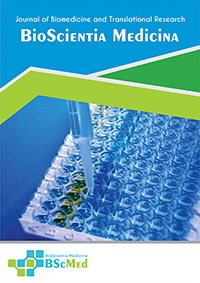Main Article Content
Abstract
Background: Accidental corrosive ingestion is a formidable pediatric emergency that can lead to severe gastrointestinal injury and long-term sequelae. Sulfuric acid, a common agent, induces coagulative necrosis, primarily affecting the stomach. The optimal management for moderate-grade injuries (Zargar Grade 2A) is debated, with a focus on preventing stricture formation. This report details a case managed with an aggressive pharmacotherapeutic protocol centered on high-dose sucralfate.
Case presentation: A 2-year-10-month-old boy was admitted following accidental ingestion of battery acid. His presentation was atypical, with vomiting but no oropharyngeal lesions. Initial investigations revealed a significant systemic inflammatory response (leukocytosis: 19,220/mm³; thrombocytosis: 581,000/mm³) and aspiration pneumonitis. Despite a 12-day delay in endoscopy due to parental refusal, an aggressive conservative regimen was initiated upon admission. This protocol included high-dose, frequent-interval sucralfate (80 mg/kg every 2 hours), intensive intravenous acid suppression (omeprazole and ranitidine), and prophylactic antibiotics. The endoscopy on day 12 confirmed Zargar Grade 2A burns in the gastric fundus, pylorus, and proximal duodenum, with the esophagus spared. The patient improved rapidly, tolerated an oral diet by day 11, and was discharged on day 14.
Conclusion: Follow-up endoscopy at 6 weeks and 6 months confirmed complete mucosal healing without any evidence of stricture or gastric outlet obstruction. This case suggests that an immediate, aggressive, non-surgical protocol featuring high-dose sucralfate can be effective in managing pediatric Grade 2A corrosive gastroduodenal burns, promoting complete healing and preventing long-term complications. The findings underscore the potential of this pharmacotherapeutic strategy and warrant further investigation.
Keywords
Article Details
As our aim is to disseminate original research article, hence the publishing right is a necessary one. The publishing right is needed in order to reach the agreement between the author and publisher. As the journal is fully open access, the authors will sign an exclusive license agreement.
The authors have the right to:
- Share their article in the same ways permitted to third parties under the relevant user license.
- Retain copyright, patent, trademark and other intellectual property rights including research data.
- Proper attribution and credit for the published work.
For the open access article, the publisher is granted to the following right.
- The non-exclusive right to publish the article and grant right to others.
- For the published article, the publisher applied for the Creative Commons Attribution-NonCommercial-ShareAlike 4.0 International License.





